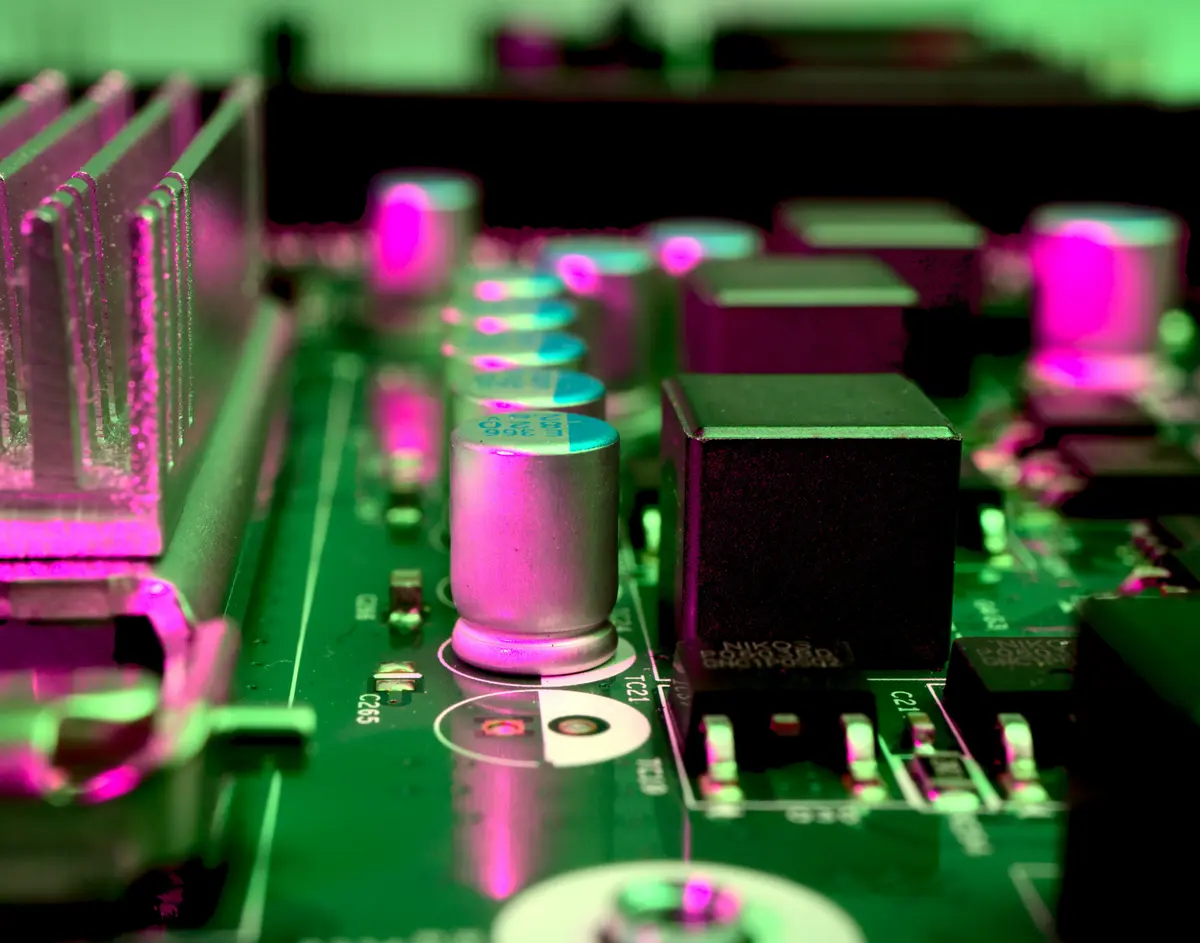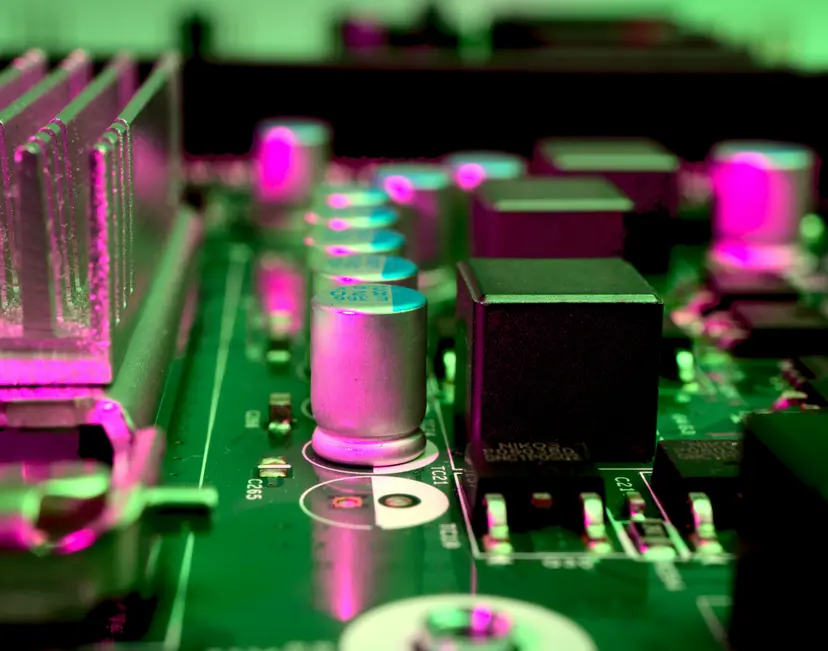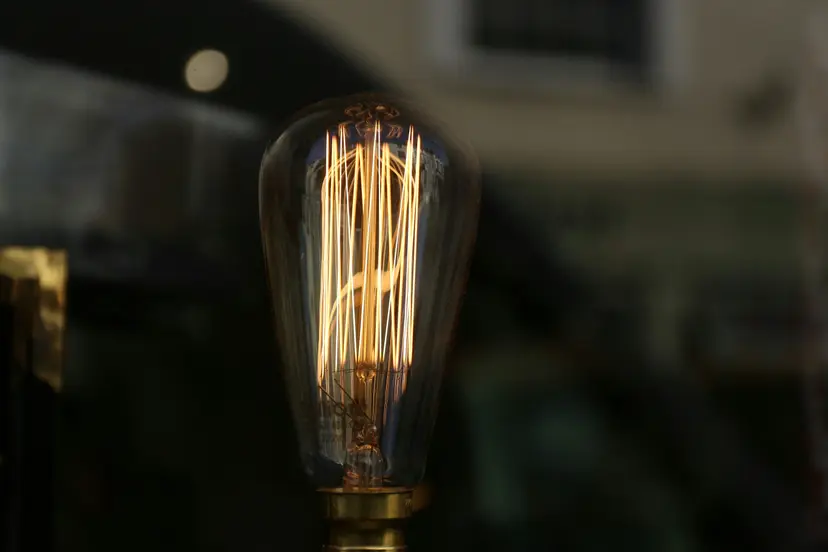AC capacitors are crucial components in electrical systems, and they are used widely in applications ranging from power factor correction to motor starting. This post explores what AC capacitors are, their types, and their crucial role in various systems. We will use real-world examples, diagrams, and equations to deepen your understanding.
What Is an AC Capacitor?
An AC capacitor is an electrical device that stores and releases energy in alternating current (AC) circuits. It has two conductive plates separated by a dielectric material. These capacitors are vital for controlling power flow, improving efficiency, and maintaining voltage stability in AC circuits.
How Does an AC Capacitor Work?
Capacitors can store energy as an electric field between their plates. In AC circuits, the voltage and current change direction periodically, causing the Capacitor to charge and discharge continuously. This behavior leads to:
- Reactive Power Compensation: Balancing the reactive power in the system.
- Voltage Stability: Mitigating voltage fluctuations.
- Phase Shift: Adjusting the phase angle between voltage and current.
Types of AC Capacitors
AC capacitors come in several types, each suited for specific applications:
-
Run Capacitors:
- Used in continuous operations like HVAC systems.
- Made with a polypropylene dielectric.
- Example: Enhancing the efficiency of air conditioners.
-
Start Capacitors:
- Provide high starting torque to motors.
- Have a short duty cycle.
- Example: Starting single-phase induction motors.
-
Power Factor Correction Capacitors:
- Improve the power factor in industrial setups.
- Reduce energy losses.
- Example: Industrial power grids.
Key Specifications
Grasping the specifications of AC capacitors is not just important, it's crucial. This knowledge helps you to make good decisions and ensures the best performance of your electrical systems.
| Specification | Description |
|---|
| Capacitance (μF) | Measure a capacitor's ability to store charge. |
| Voltage Rating (V) | Maximum voltage the capacitor can withstand. |
| Tolerance | Allowable deviation from the specified capacitance. |
| Temperature Range | Operational temperature limits. |
Example: Using AC Capacitors in Motors
Consider an AC motor requiring a start and run Capacitor:
- Start Capacitor: Provides an initial torque boost, e.g., 100 μF, 250V.
- Run Capacitor: Ensures smooth operation, e.g., 40 μF, 440V.
When the motor starts, the start capacitor engages and disengages once the motor reaches operational speed. The run capacitor then maintains efficiency and performance.
Calculations
Let's calculate the reactive power (
Q) provided by a capacitor:
Q=V2×ω×C
Where:
- V is the RMS voltage.
- ω=2πf, with f as the frequency.
- C is the capacitance.
For a 50 μF capacitor in a 240V, 50Hz system:
Q=2402×2π×50×10−6≈1.81kVAR
This reactive power helps offset inductive loads in the circuit.
Applications of AC Capacitors
AC capacitors are indispensable in numerous domains:
-
HVAC Systems:
- Used in compressors and fans for energy efficiency.
- Example: Run capacitors in air conditioning units.
-
Industrial Power Systems:
- Improve power factor and reduce electricity costs.
- Example: Power factor correction capacitors in factories.
-
Lighting Systems:
- Stabilize voltage and improve efficiency.
- Example: Capacitors in fluorescent lamps.
Table: Comparison of Start and Run Capacitors
| Feature | Start Capacitor | Run Capacitor |
|---|
| Duty Cycle | Short | Continuous |
| Capacitance Range | 50-300 μF | 5-50 μF |
| Voltage Rating | 250-450V | 370-440V |
| Purpose | Provide starting torque | Maintain operational efficiency |
Practical Considerations
When it comes to selecting an AC capacitor, there are several practical considerations to keep in mind. These guidelines will help you make the right choice and ensure the efficient operation of your electrical systems.
- Voltage Rating: Choose a capacitor with a rating higher than the circuit voltage.
- Capacitance Value: Ensure compatibility with the application requirements.
- Environmental Factors: Consider temperature and humidity ratings.
Maintenance Tips
- Regularly inspect capacitors for physical damage or leakage.
- Replace capacitors showing signs of swelling or corrosion.
- Test capacitance with a multimeter to ensure performance.
Conclusion
AC capacitors are fundamental components in modern electrical systems, offering efficiency, stability, and performance enhancements. By understanding their types, working principles, and applications, you can effectively design and maintain systems that rely on these versatile devices.
AC capacitors ensure optimal functionality and energy management in industrial setups and household appliances.
Credits



